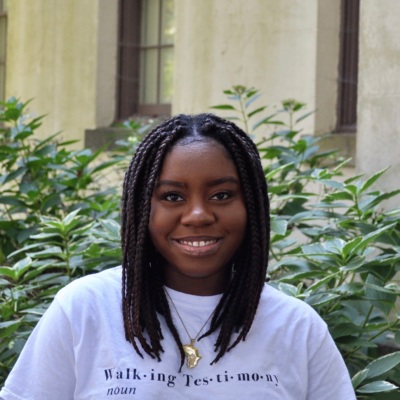Safer for Whom? The Bipartisan Safer Communities Act Does Not Actually Keep Communities Safe
By Deanie Anyangwe and Whitney Bunts
In June 2022, President Biden signed the Bipartisan Safer Communities Act into law. This legislation was developed and created in response to the increasing number of mass shootings in recent years, including the tragedy in Uvalde, Texas. For years, there has been a consistent outcry for gun control and other measures to keep the people of this nation safe. However, the Bipartisan Safer Communities Act does not do that.
Although the Bipartisan Safer Communities Act provides needed funding for mental health services, this legislation also expands infrastructure for increased surveillance and other punitive diversion programs. Additionally, the Bipartisan Safer Communities Act provides significant investments in police presence in schools and other school-hardening mechanisms that have been shown to expose young people to violence and increase their likelihood of going through the school-to-prison pipeline. This is deeply problematic because, while some of these mental health provisions may positively impact youth, the increased criminalization provisions will also have devastating consequences for youth.
Increased police presence and other school-hardening measures harm Black and brown youth, poor youth, queer youth, trans youth, and youth with disabilities. The U.S. Department of Education found that Black students are 2.3 times more likely to receive a referral to law enforcement or be subject to a school-related arrest compared to their white peers. And, when applying a gendered lens, other scholars have found that Black girls are six times more likely to receive an out-of-school suspension compared to white girls of the same age. For undocumented immigrant youth, the presence of school resource officers increases the likelihood of youth being arrested for behavior that could have been addressed by school staff, and this negatively impacts their ability to apply for immigration status regardless of whether they were charged. Moreover, school-based law enforcement often criminalizes disabled youth behaviors.
Given that students who are marginalized already disproportionately experience punitive school disciplinary practices, increased exposure to law enforcement and surveillance can only mean these same students will be targeted and vilified for developmentally appropriate behaviors. Studies have found that increased federal funds for law enforcement in schools lead to poor student outcomes such as increases in discipline rates and decreases in graduation rates and postsecondary enrollment. In addition, the criminalization of Black and brown youth negatively impacts attendance rates, test scores, graduation rates, and health outcomes, while increasing the likelihood of contact with the criminal legal system and time in adult prisons.
Increased police presence does not protect people from school shootings, and, in fact, data shows that fatalities are typically higher when armed guards are present. Nonetheless, the Bipartisan Safer Communities Act continues to pour resources back into the same system that continues to perpetuate violence. This bipartisan legislation provides over $13 billion in federal dollars to law enforcement and other programs, school hardening, and state-led crisis intervention programs. The Bipartisan Safer Communities Act specifically appropriates a total of $1.6 billion to the U.S. Department of Justice for policing, surveillance, and other school-hardening interventions. This legislation also appropriates $1 billion to the U.S. Department of Education and $360 million to the Department of Health and Human Services, with both departments able to direct funds to law enforcement without proper federal guidance saying otherwise. Additionally, the legislation needs clarification on how 988 implementation funds will be used. There is a strong need for proper federal guidance to ensure that 988 is sustainable, accessible, equitable, non-carceral, and includes a youth-centered and developmentally appropriate response.
Additional funding for law enforcement makes little sense given that youth crime and arrest rates have declined over the last 20 years. The Bipartisan Safer Communities Act does not appropriately respond to the experiences of young people and diverts funds away from critical supportive services that would promote positive youth development. The Biden Administration has been resolute about the role of the criminal legal system and law enforcement in achieving public safety. However, in a white supremacist society, true safety will remain elusive to folks who are Black and brown, queer, disabled, poor, and/or gender-oppressed when guided by racist, carceral frameworks.
For this nation to achieve true safety, we must make a radical change by divesting from law enforcement and mass incarceration and, instead, investing in Black and brown youth and their communities. This looks like utilizing youth-focused alternatives to law enforcement such as mobile response, implementing evidence-based community violence intervention strategies that include employment and workforce supports, investing in community repair, and shifting decision-making power on these funding sources to the people in the community. Dismantling violent systems and promoting a culture of community care backed by social policy is how we keep our young people safe.
